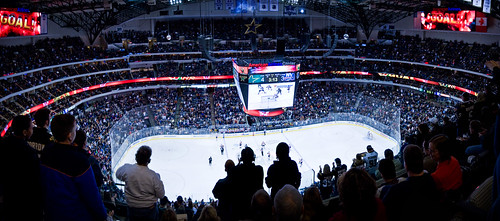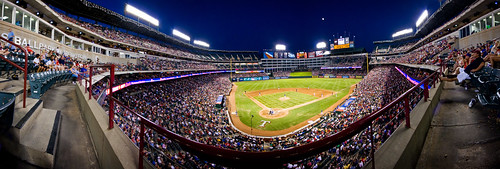Some friends and I went to the Dallas Stars game last Friday. I hadn’t been to a hockey game in a couple years and so I was rather looking forward to it. Plus, I had brought my camera along to see if I could get some shots.
It didn’t take long for me to realize that hockey can be deceptively tricky to photograph. On one hand, it’s somewhat dark inside the arena, but at the same time, longer shutter speeds can more easily blur the action. The general solution, I suppose, is just to use higher ISO settings. (I went to ISO 400, myself, but in retrospect, probably should have bumped that up to ISO 640 or even ISO 800.)
What may be the most squirrely bit about photographing hockey, though, is that the ice is really white and it can throw off one’s exposure. Most cameras judge exposure by trying to ensure that each shot has an average overall brightness of medium gray. What ends up happening in this case is that the camera sees the white ice and thinks that the shot is overexposed; so, the camera lowers exposure until the ice is back to a medium gray (which, of course, actually means that the ice is now underexposed).
To counteract these types of exposure issues, I ended up adjusting my camera’s exposure compensation to +2/3 stop; that pretty much took care of it. The shot that you see above is a panorama made from ten shots stitched together. If it helps put its dimensions in perspective, if you consider that a widescreen HDTV is 16:9, this image would be around 20:9.

